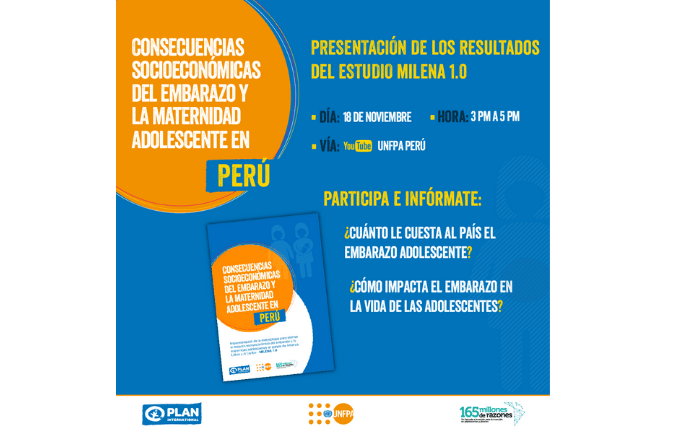LIMA PERU. - In our country, 1 of 4 inhabitants are adolescents or young people between 10 and 24 years old. This population is the basis of a demographic bonus whose window of opportunity will close in just over 20 years. Therefore, effective investment in them is essential for them to have quality health and education, are productive, and are fully committed to breaking the cycle of poverty.
The adolescent and young population of the country and the region faces development challenges, aggravated and deepened by the effects of COVID-19. These effects have exacerbated gender-based violence, gaps in access to health and the burden and opportunities of work, especially for women.
Faced with this, two of the main situations that limit the freedom of decision of girls and young people are: pregnancy and adolescent motherhood. Both are cause and consequence of the violation of their rights, constituting barriers for their present and future development, and that of their families.
Plan International and the United Nations Population Fund (UNFPA) warn that pregnancy and motherhood in adolescent women contribute globally to the intergenerational transmission of poverty, vulnerability and gender inequality.
Unfortunately, Peru is no stranger to this problem. Although there has been a sustained decrease in the Specific Adolescent Fertility Rate in the last two decades (from 75 to 53 births per 1,000 women between 1996 and 2017-18), it is still high and its breakdown reveals the persistence of severe inequities.
This study highlights the social costs of adolescent pregnancy for the states and for mothers, including the educational dimension, paid work, differential levels of unemployment, remuneration obtained and the care costs of pregnancy, childbirth and the puerperium.
Socio-economic consequences of teenage pregnancy and motherhood
The country offices of Plan International and UNFPA present the results of the study “Socio-economic consequences of pregnancy and adolescent motherhood in Peru” with the aim of contributing to improve the understanding of the economic, social and public health benefits of investing in prevention pregnancy and adolescent motherhood, as well as to implement public policies for the benefit of the development and rights of girls and adolescents.
This study highlights the social costs of adolescent pregnancy for the states and for mothers, including the educational dimension, paid work, differential levels of unemployment, remuneration obtained and the care costs of pregnancy, childbirth and the puerperium.
In addition, it includes the fiscal dimension (collection of direct and indirect taxes related to adolescent mothers). Added to all these costs, the impact on the national economy becomes significant and the opportunity cost involved in preventing adolescent pregnancy becomes even more relevant.


